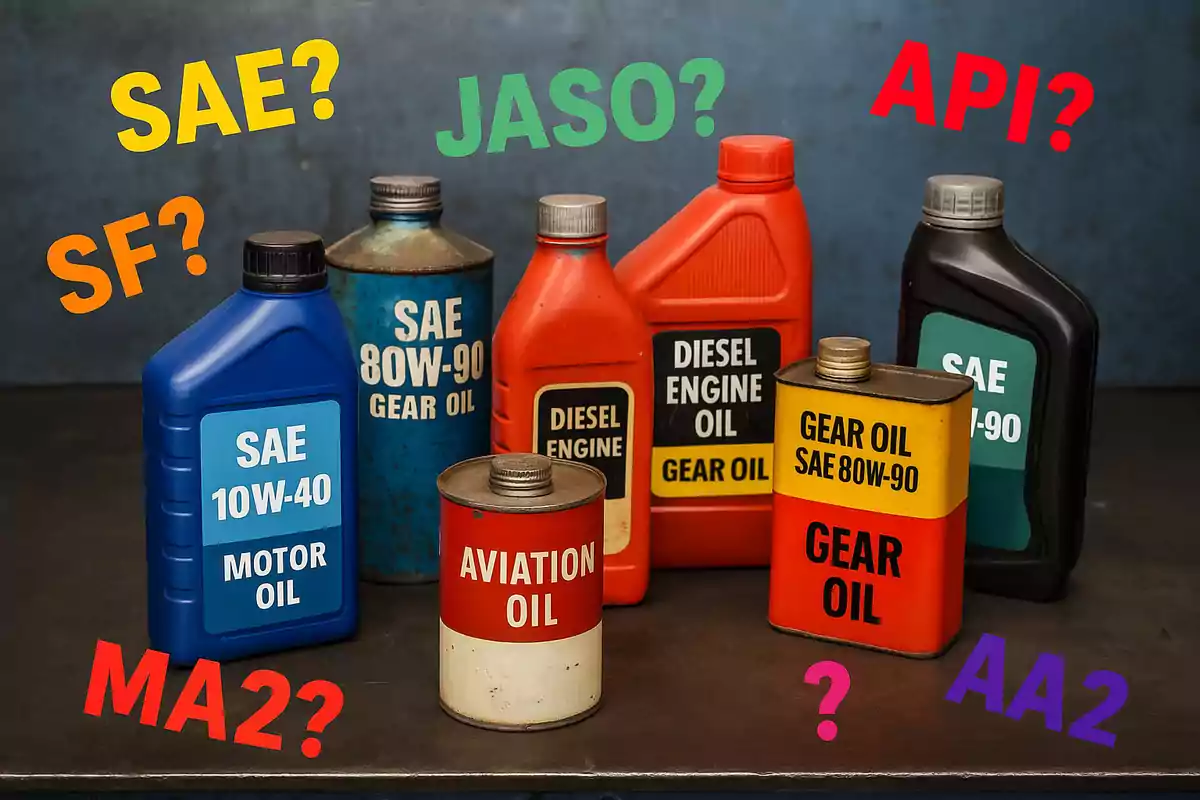
The acronyms on motorcycle oil: use the right one and you'll get rewarded
The oil you use in your motorcycle comes with quite a jumble of letters. We explain what they mean
It's time to change your motorcycle's oil. You look at the manual and find a combination of letters and numbers that seem like a secret formula: SAE 10W40, API SN, JASO MA2.
Of course, the question comes up right away: Can I use another one? Is one better than another? What does all this mean? It's normal not to be sure.

Behind each of those acronyms is a technical classification system. It's designed to ensure that the oil you put in your motorcycle fulfills certain basic functions: lubricating, cooling, and protecting the engine, the gearbox, and, in many cases, the clutch.
How oil is made
Every oil is made up of three main elements. First is the base, which makes up most of the volume. Then there are some polymers that give it the desired viscosity, and on top of those, a package of additives that define its chemical behavior.
The base can be mineral, synthetic, or semi-synthetic. This classification depends on the type of refining it has undergone.
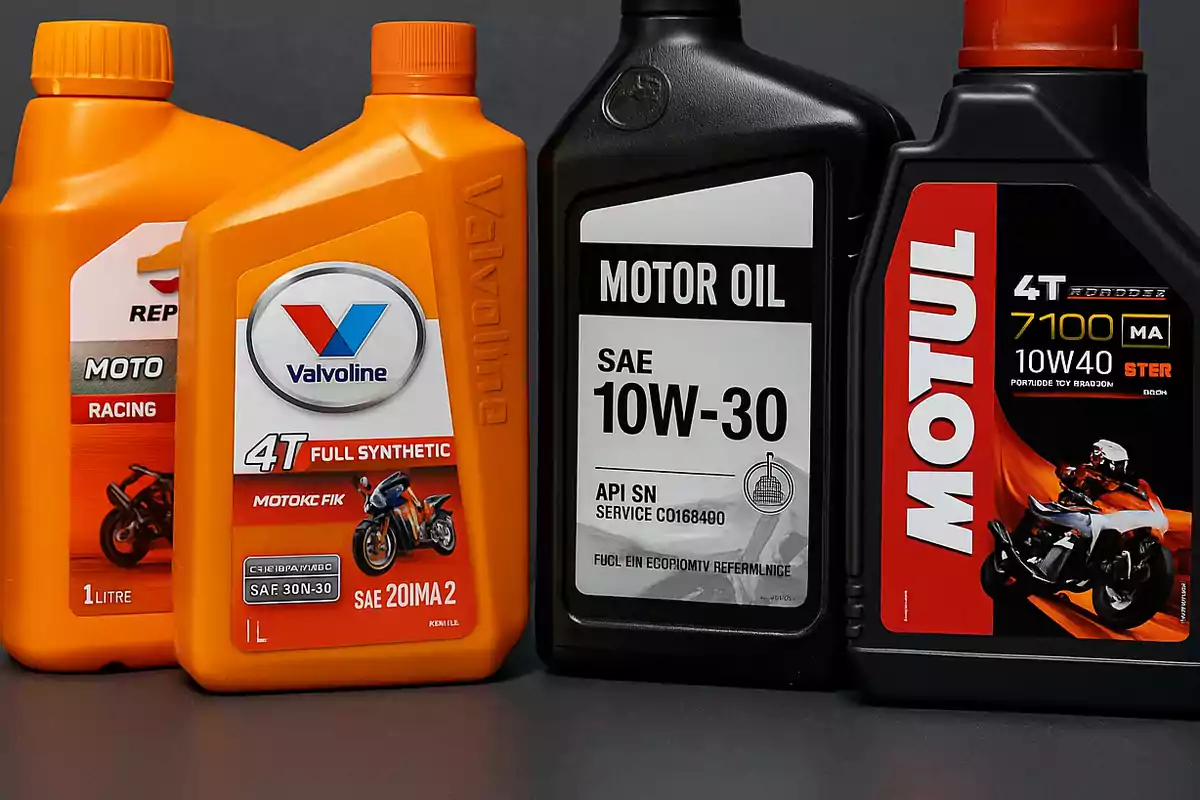
Mineral bases are simpler and more economical, while synthetic ones are obtained through complex chemical processes, are more stable, and offer better thermal and mechanical performance.
Semi-synthetics mix both, seeking a balance between quality and price.
Those added polymers allow the oil to keep its properties over a wide range of temperatures. Thanks to them, for example, multigrade oils are achieved, like a SAE 10W40. That "10W" indicates its behavior in cold (W for "winter"), and the "40" its viscosity when hot.
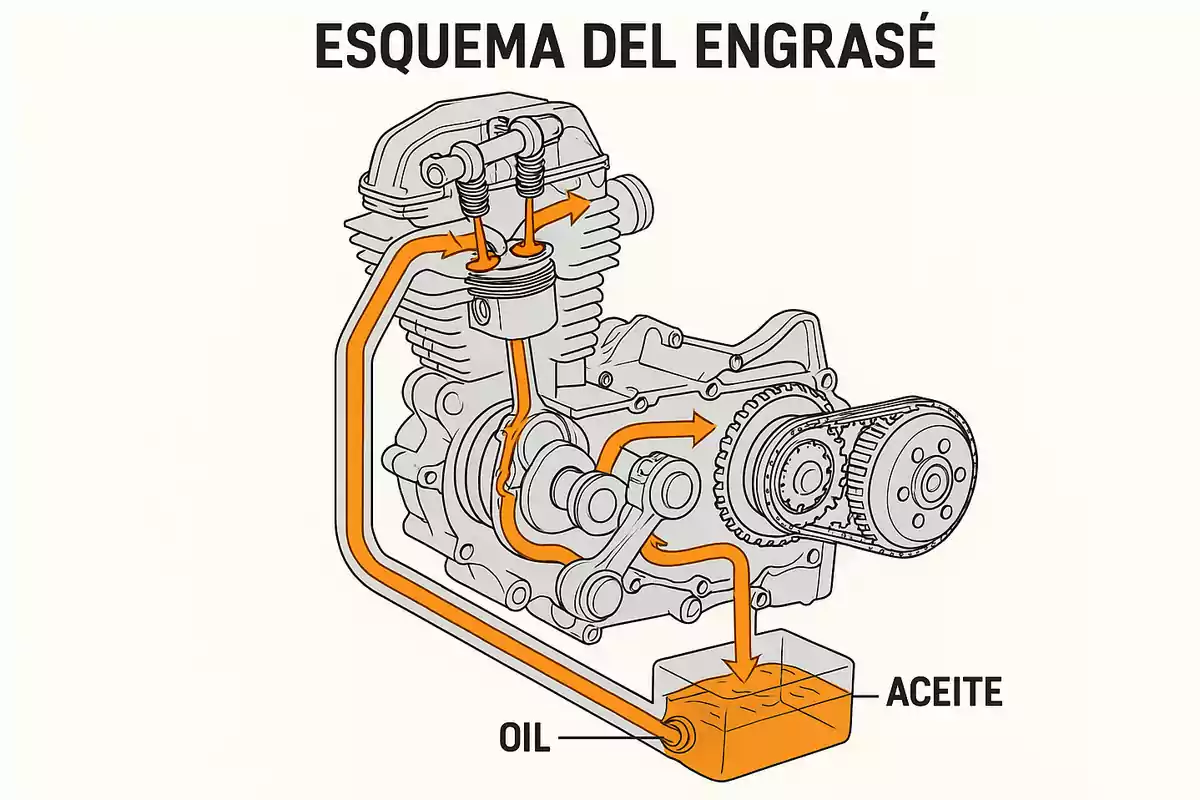
Finally, additives are incorporated that fulfill specific functions such as antioxidants, detergents, anti-foaming agents, anti-wear agents, and others.
The specific formula depends on the type of engine it's intended for. Oil for an urban scooter is not the same as for a large-displacement trail bike or a high-performance enduro motorcycle, and therefore, the additives used change.
SAE viscosity: The first thing you should look at
The SAE (Society of Automotive Engineers) standard is probably the best known. It defines how the oil's viscosity changes according to temperature.
Almost all current motorcycle oils are multigrade. For example, an SAE 10W30 behaves like an SAE 10 oil when cold and like an SAE 30 when the engine is hot.
This ensures good protection when starting cold and stable lubrication under normal operating conditions.
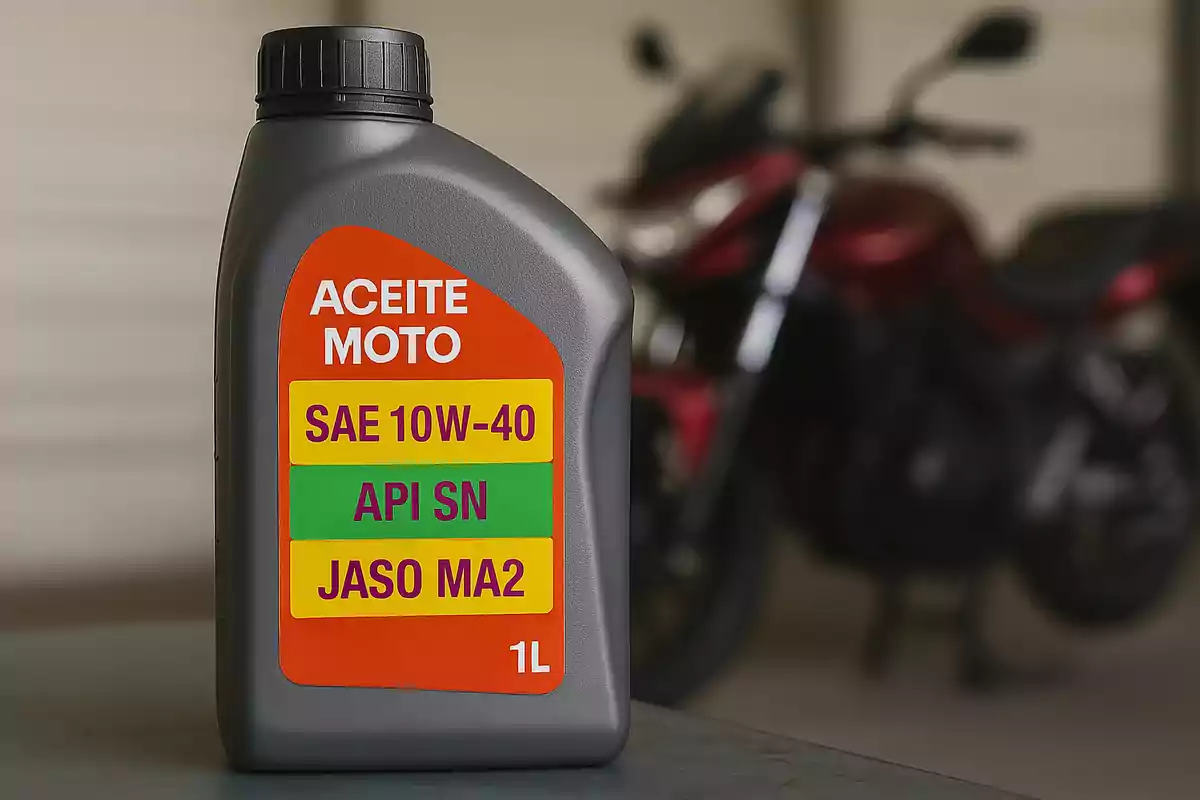
Choosing the correct viscosity is not a whim. The engine's lubrication system is designed to work with a specific type of fluid.
If you use an oil that's thicker or thinner than recommended, you can harm lubrication or cooling.
That's why it's key to follow the manufacturer's instructions, which in many cases will give you several options depending on the ambient temperature.
JASO classification: Special for motorcycles
The JASO (Japanese Automotive Standards Organization) standard is exclusive for four-stroke motorcycle engines.
It was created in the 1990s as a response to problems caused by some car oils in oil-bathed clutches. Because these are typical in motorcycles.
It's logical. In a car, the engine oil only lubricates the engine, camshafts, crankshaft, or pistons. In many motorcycles, that same oil also lubricates the gearbox and the clutch.
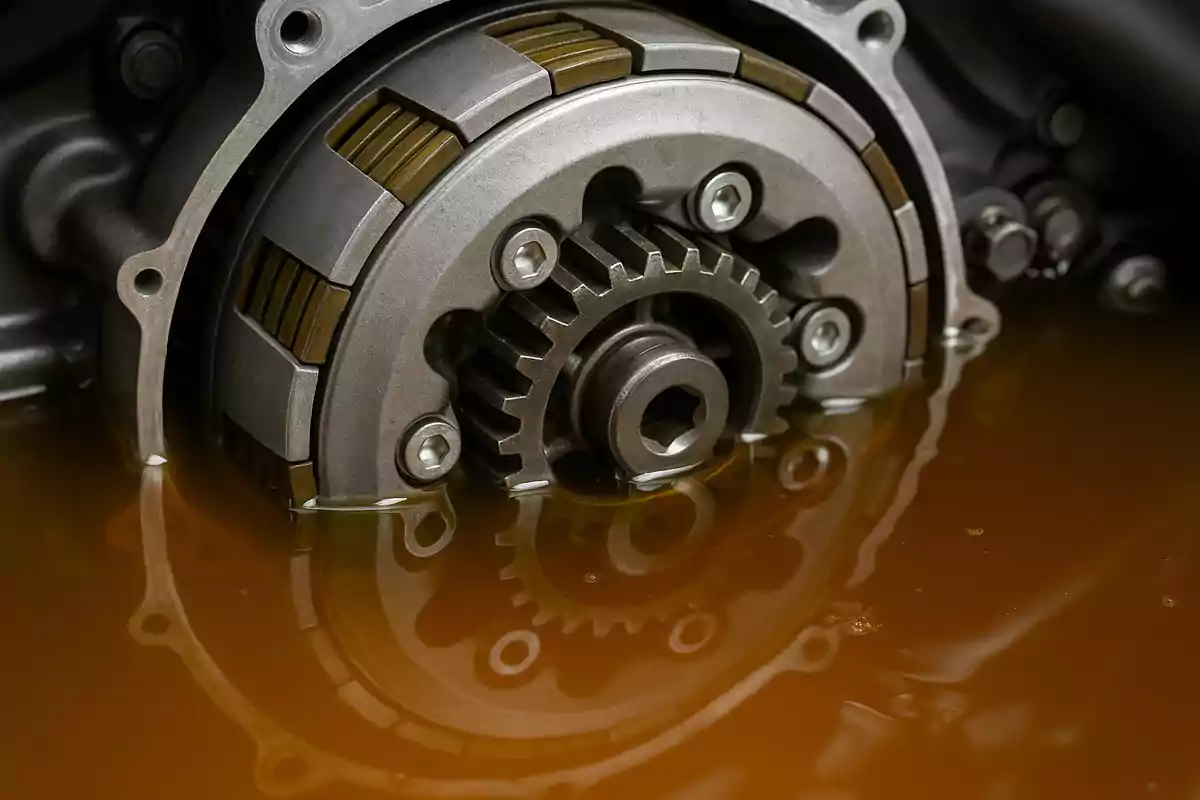
Meanwhile, while in the first case it must, above all, avoid friction, in the clutch it must allow it. That is, oils with low friction, which are very good for protecting the engine, can cause the clutch to slip.
JASO classifies oils according to their level of friction:
JASO MB: low friction. Suitable for scooters without oil-bathed clutch.
JASO MA: medium friction. Valid for motorcycles with a wet clutch.
JASO MA2: higher friction. It's the most recommended for modern motorcycles, with the best performance for the clutch.
If your motorcycle has a clutch submerged in oil (which is usual in any geared motorcycle), you should use a JASO MA or MA2 oil.
API classification: Technology and age
The API (American Petroleum Institute) classifies oils according to the technology used in their manufacture and their compatibility with different types of engines.
In the case of gasoline engines (spark ignition), the letter "S" is used, followed by another letter that indicates the technological level. The further along that second letter is, the more modern the formulation:
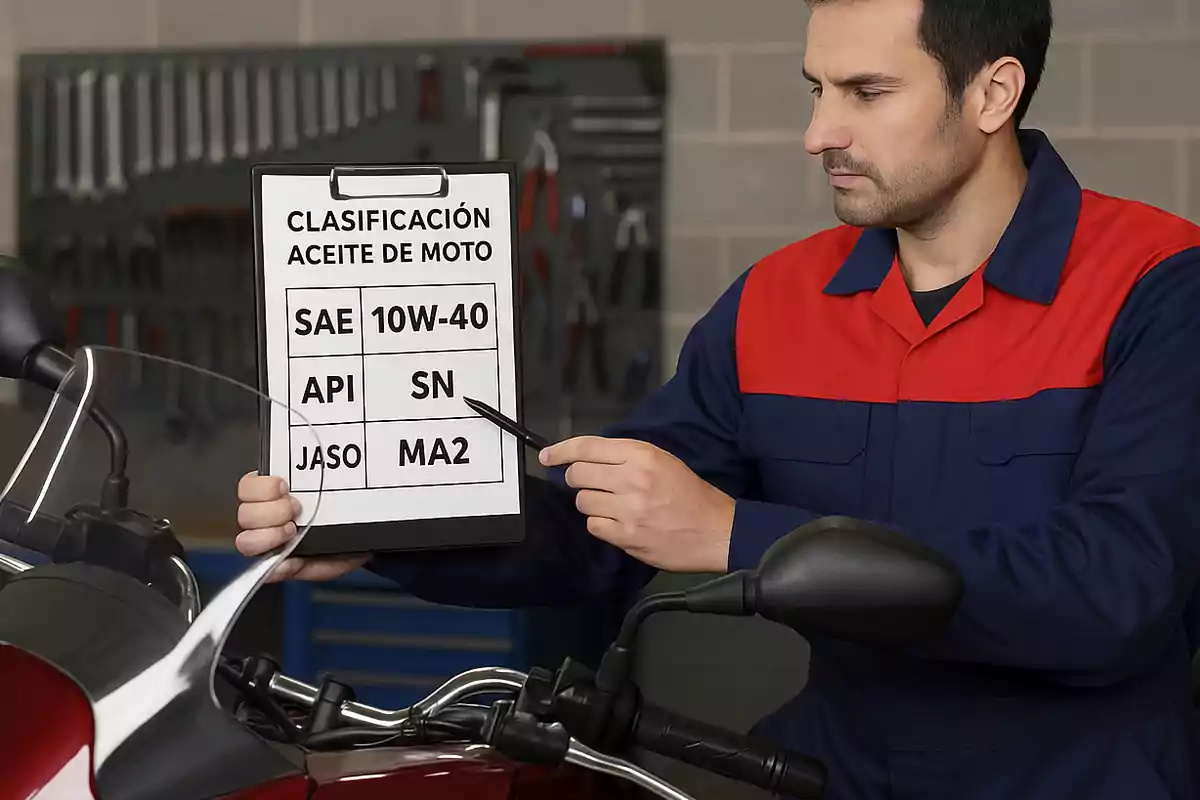
API SA:very basic oil, only suitable for old engines.
API SF: valid for engines prior to 1988.
API SH: prior to 1996.
API SL/SM/SN: modern oils, suitable for current engines. The latest evolution is SN (since 2016).
There is also the "C" series, designed for diesel engines (compression ignition), but it's not relevant for gasoline motorcycles.
Conclusion: How to choose the right oil
Knowing how to read an oil label is essential to take care of your motorcycle's engine. You need to know the right viscosity (SAE), the friction level compatible with your clutch (JASO), and make sure its formulation is up to date (API).
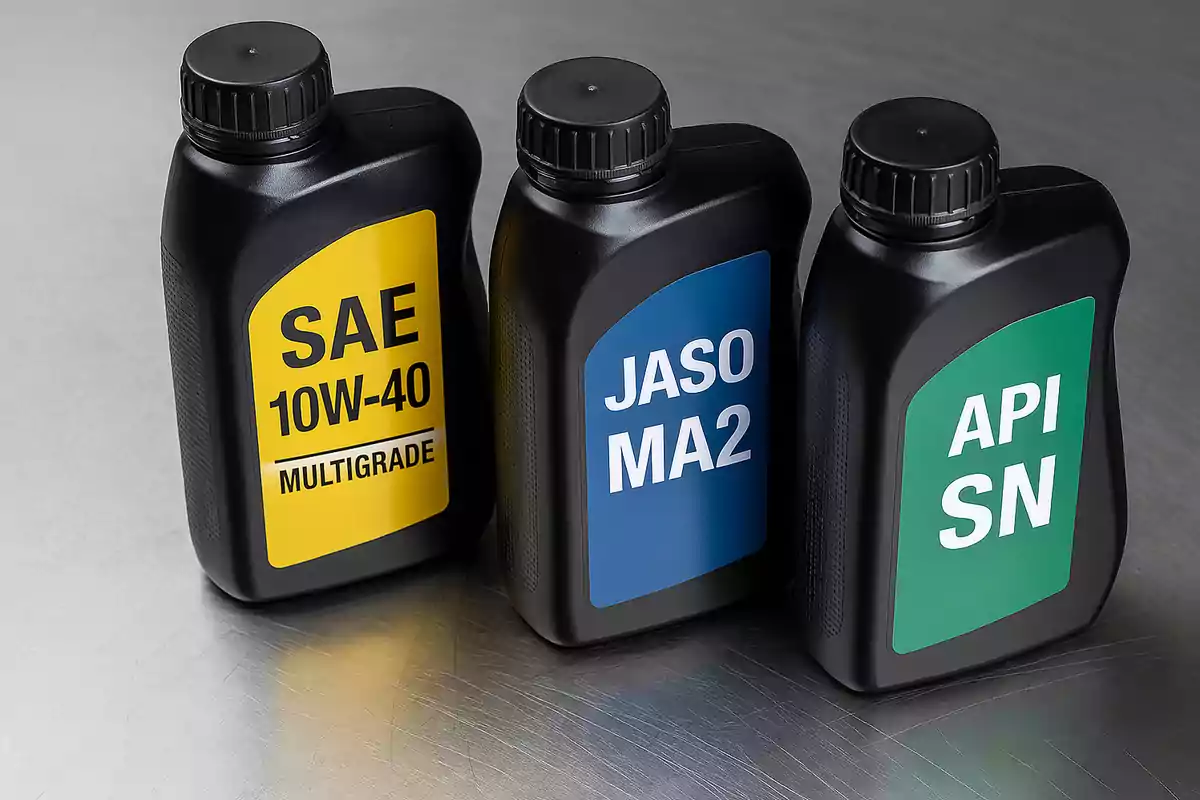
In addition, keep in mind the type of base (mineral, synthetic, or semi-synthetic) and how you use your motorcycle. Riding in the city every day is not the same as going off-road with an enduro or traveling with a loaded GT.
Oil is a vital element. Changing it on time and choosing the right one is the simplest and cheapest way to prolong the life of the engine, the gearbox, and the clutch. If you have doubts, the best thing is to consult the manufacturer or your trusted mechanic.
More posts: